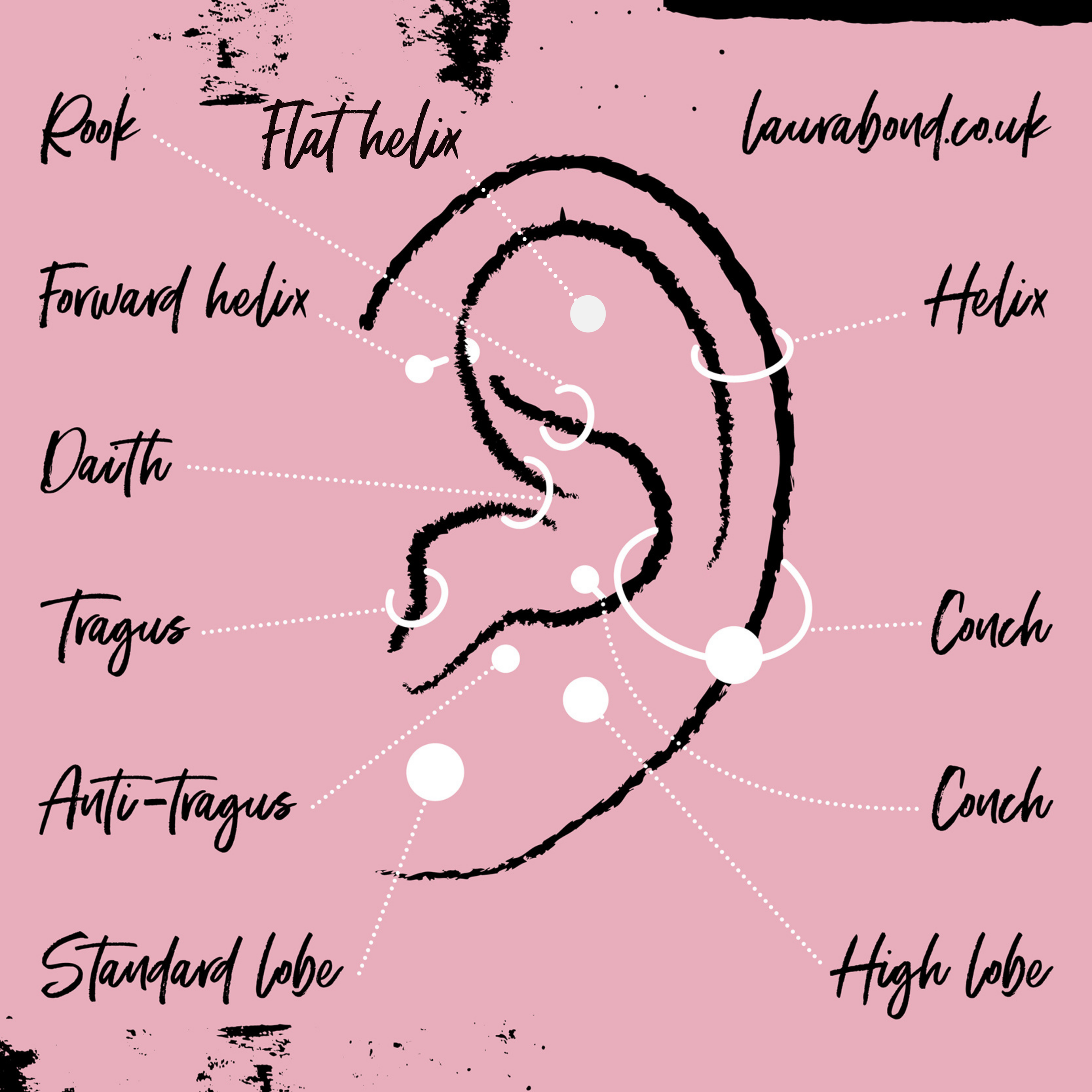Piercing Stacks Up…
Can a carefully curated ear be the latest way to make you look younger? As she prepares to open her Edinburgh flagship store Hood asked Laura Bond – who specialises in stackable jewellery – everything you need to know…
From the lips and tongue in ancient African cultures, the nose and ears in South East Asia, to the nipples and penis in the Roman Empire, piercings have a long, rich, cultural and spiritual history dating further back than the Pyramids.
Getting pierced has been something of a rite of passage for generations, with even the Queen having her ears pierced for her coronation. But this is no longer a trend dominated by the young. In fact, some women are choosing to shun Botox in favour of the immediate anti-ageing qualities of multiple ear piercings.
What exactly is a 'curated ear'?
Hailed as the fashion world’s favourite rebellious statement the ‘curated ear’ trend is all about delicate and decorative ear piercings – the more the better. There are no rules when it comes to piercing placements, it’s about creating a look that’s unique to a person’s anatomy and style. Symmetry between the two ears is not necessary, instead it’s about creating balance with earrings that complement each other. Your ears should be sisters, not twins.
The beauty of the curated ear trend is that hoops and studs are suitable for most piercing placements so you can change up your look when the mood takes you. We recommend a mixture of our delicate hoops stacked up the ear along with dainty studs to create an ear stack that’s truly your own.
Is it really anti-ageing?
Multiple ear piercings, when they’re positioned just right, should run in line with your features. This trick helps to provide faces with definition and creates a streamlined, lifted effect. As the jewellery catches the light the overall beauty of the face is enhanced by creating a different area of focus. To achieve this flattering look I recommend choosing a piercer who uses a needle, rather than a gun, for extra precision. Ask if they can consider your face shape and the position of your ears, this way the final look will be subtle and refined. The easiest way to achieve a pretty, lifted look is to go for a sleeper through the helix and add several piercings along the lobe.
Are there certain 'curations' that look better on some ears than others?
Everyone’s anatomy is unique and a reputable piercer will advise you on what piercings are suitable for you. They should also take time to discuss your vision and help you achieve your dream ear look. A look I love is the stacked lobe, two lobe piercings on top of each other. It creates a unique look for someone wanting something a bit different and it’s a stylish alternative to piercing the upper ear cartilage. It’s also a great way to balance out badly positioned piercings that you may have had done in your teens.
What big shifts have you seen in the world of piercing trends?
The biggest shift I’ve seen is the increase in popularity for lesser-known cartilage piercings like the daith, rook and conch. Also the increase in the availability of dainty and feminine solid gold jewellery for piercings has meant the look is no longer seen as ‘alternative’. People who would have not considered the look for them five years ago are now experimenting with multiple piercings. A wider range of fine body jewellery has opened up the trend to a brand new audience. We see women in their early 20s right through to women in their 60s curating their ears with our jewellery. Over the next five years I see the trend growing and growing. If you’re a jewellery lover like me then a chance to wear more is only a good thing!
What's your one tip for someone with a single lobe piercing on each ear who wants to spice things up but doesn't know where to begin?
A high lobe/lower helix piercing is a popular choice for people starting their curated ear journey. The position suits a wide variety of jewellery styles, including huggies and cute climber studs, and the healing time (5-6 months) is less than other cartilage piercings like the helix or daith (9-12 months). The tragus (healing time 6-12 months), the small nub of cartilage in the middle of the ear, is a quirky placement that suits hoops or studs. I’d also advise anyone considering piercing to check healing times – some can take up to a year to heal fully and people who are unfamiliar with the trend sometimes underestimate how long it can take.

